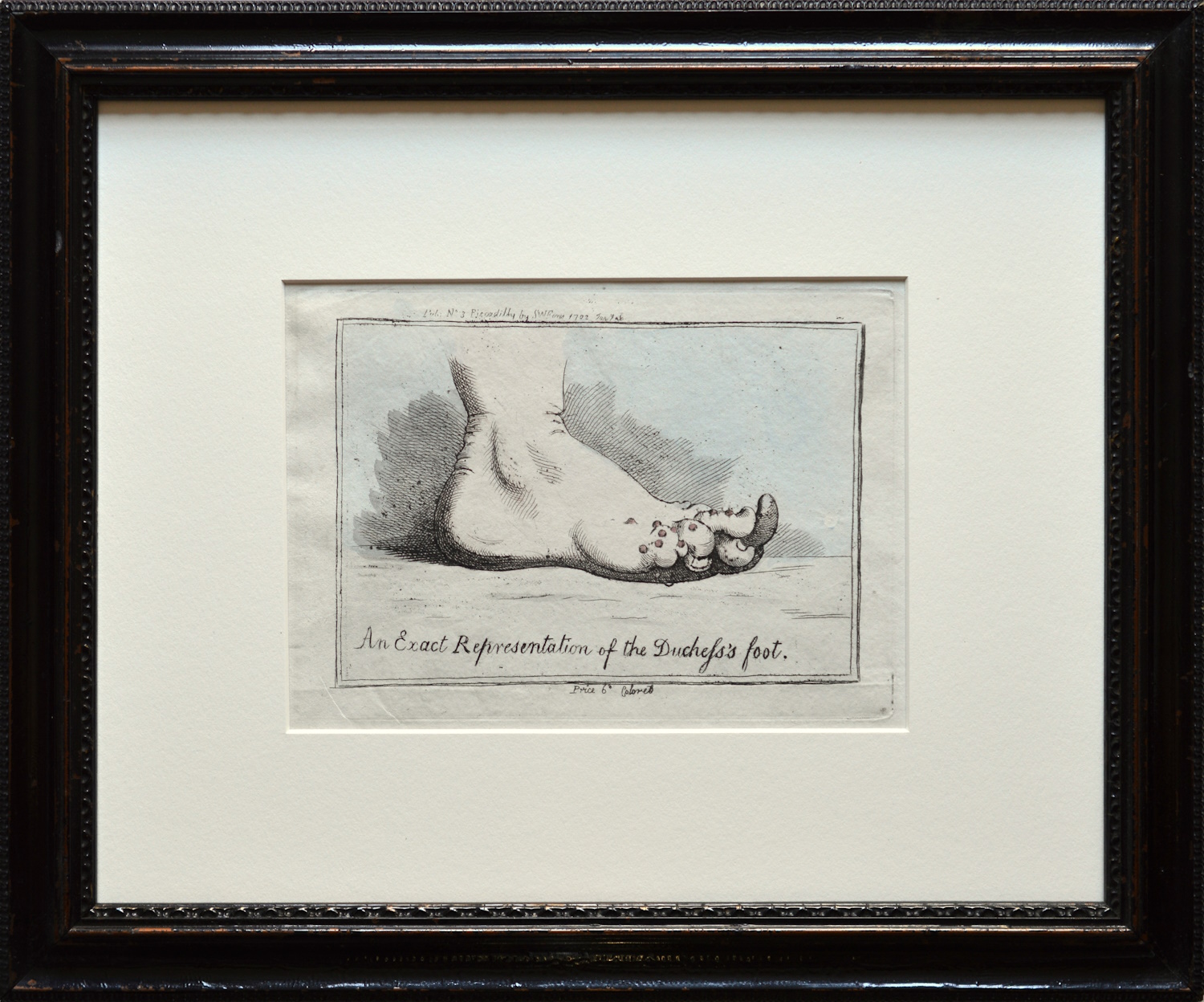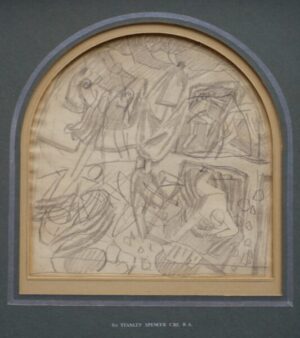Cruikshank, Isaac (1764-1811)
Isaac Cruikshank was a Scottish painter and caricaturist, born in Edinburgh and spent most of his career in London. Cruikshank is known for his social and political satire. His sons Isaac Robert Cruikshank (1789–1856) and George Cruikshank (1792–1878) also became artists, and the latter in particular achieved fame as an illustrator and caricaturist.
Isaac Cruikshank was born in 1764 to Elizabeth Davidson (born c.1725), daughter of a gardener, and An-drew Crookshanks (c.1725–c.1783), a former customs inspector, dispossessed for his role in the Jacobite. Isaac grew up in New North Kirk parish in Edinburgh after his family moved there. He was the youngest child and was interested in all sorts of hobbies including sports and music. Isaac studied with a local artist, possibly John Kay (1742–1826).
In 1783 Cruikshank left Scotland to travel to London with his master. There he married Mary Mac Naugh-ton (1769–1853) on 14 August 1788. The couple had five known children, two of whom died in infancy. A daughter, Margaret Eliza (1808–1825), a promising artist, died at the age of eighteen of tuberculosis. Their sons Isaac Robert Cruikshank (1789–1856) and George Cruikshank (1792–1878) also became artists.
Cruikshank's first known publications were etchings of Edinburgh "types", from 1784. His first caricature etching called Scotch Eloquence was of Edinburgh characters. He produced illustrations for books about the theatre, did the frontispiece for Witticisms and Jests of Dr Johnson (1791), and illustrated George Shaw’s extensive General Zoology (1800–26). His watercolours were exhibited, but in order to make a living, he found it more lucrative to produce prints and caricatures. He was responsive to the marketplace but firm in his dislikes of Napoleon and Britain's home-grown political radicals, including, for example, the members of the London Corresponding Society and the Society of Friends of the People. He and James Gillray developed the figure of John Bull, the nationalistic representation of a solid British yeoman. His Olympic games or John Bull introducing his new ambassador to the grand consul (1803) and Boney at Brussells (also 1803) contrast an implied European capitulation and British defiance under the threat of invasion.
Near the start of his fame in 1789, Cruikshank produced several watercolours adapted from his earlier drawings, and was on exhibition at the Royal Academy. Publisher John Roach was a friend and patron. Cruikshank later also worked with print dealer S. W. Fores and Johnny Fairburn. He also collaborated with G. M. Woodward, and later, with his son George. (See also G. S. Tregear.) He also etched and de-signed lottery tickets and the song-heads of musical scores.
Cruikshank died of alcohol poisoning at the age of fifty-five because of a drinking contest, of which he was declared the winner. He is buried near his home in London.
During the late 18th century, there was an enormous amount of propaganda due to political turbulence in Europe, in particular the French Revolution. The British Monarchy was also being highly criticized for de-bauchery during this time, as it was also a period of economic hardship and debt. Political caricature and graphic satire became a prominent outlet for mass propaganda to express competing perspectives on political and economic issues. The revolution also triggered feelings and expressions of patriotism towards artists' home countries which they depicted by shedding a grotesque light on their countries' enemies.
Isaac Cruikshank, James Gillray, and Thomas Rowlandson were considered the leading caricaturists during this period, and they produced many popular sketches and graphics satirizing contemporary issues. These three prominent artists' distinct styles and subject matter became notable and widespread throughout Europe, although they also adapted and borrowed images from lesser-known artists. The three illustra-tors were sometimes considered rivals as their ideas often took opposing positions on important matters, despite sometimes collaborating on works. A common theme in all three artists' works was the portrayal of gluttony and cannibalism meant to represent the exploitation of the people by the monarchy, sparked by the effects on the economy of France of the Revolution. Their work, however, had to be published exclusively in Britain, as in France censorship laws were at an all-time high.
In 1803 after the French declared war on Britain, numerous patriotic prints resulted focused around sup-port and strength for the British Homefront. Cruikshank was one of the first to illustrate Napoleon as a negative caricature in his work Buonaparte at Rome Giving Audience in State (1797). In 1809, Cruikshank created French Generals Receiving an English Charge which largely attacked Prince Frederick, Duke of York for his scandalous affairs with Mary Anne Clarke during the time.
A contemporary of James Gillray and Thomas Rowlandson, Cruikshank was part of what has been called "the Golden Age of British Caricature." Some have called his work "uneven" but at its best, it provided a vivid insight into the cultural and political preoccupations of the British during the decades at the turn of the nineteenth century. He was an avid and skilled water colourist, and had a "keen sense of humour", although his achievements during his shortened life suffered from the greater successes and "more pro-longed career of his gifted son."
There are believed to be at least 345 prints created by Isaac Cruikshank between 1793 and 1800 that are in the British Museum's collection. E.B. Crumbier created a catalogue of around 1350 images that Cruikshank produced in his lifetime. In the Huntington Library, California, there is also a collection of his watercolour drawings.
Cruikshank, like his son Isaac Robert Cruikshank and more famous son George Cruikshank, was a pioneer in the history of comics through creating several cartoons which make use of narrative sequences and/or speech balloons.






